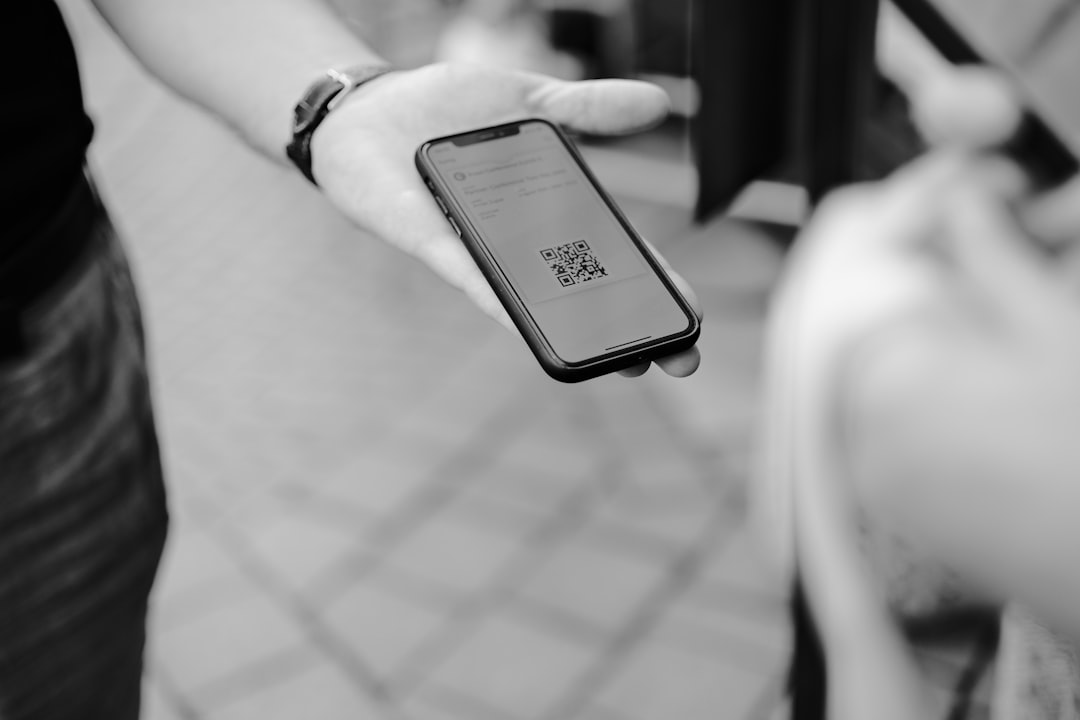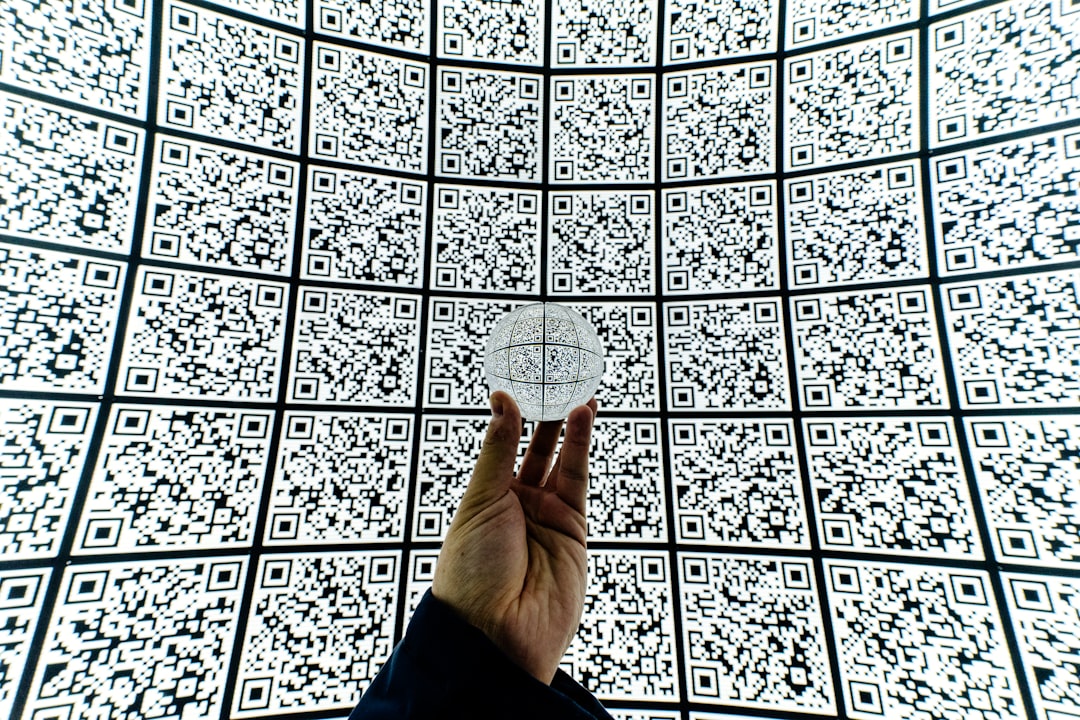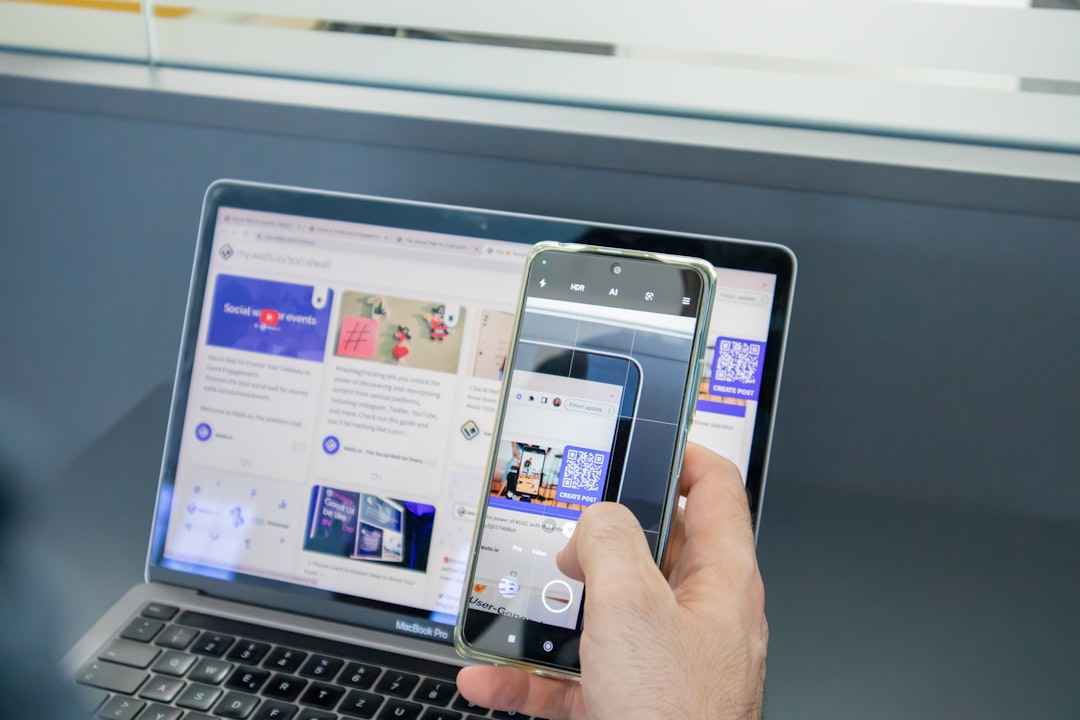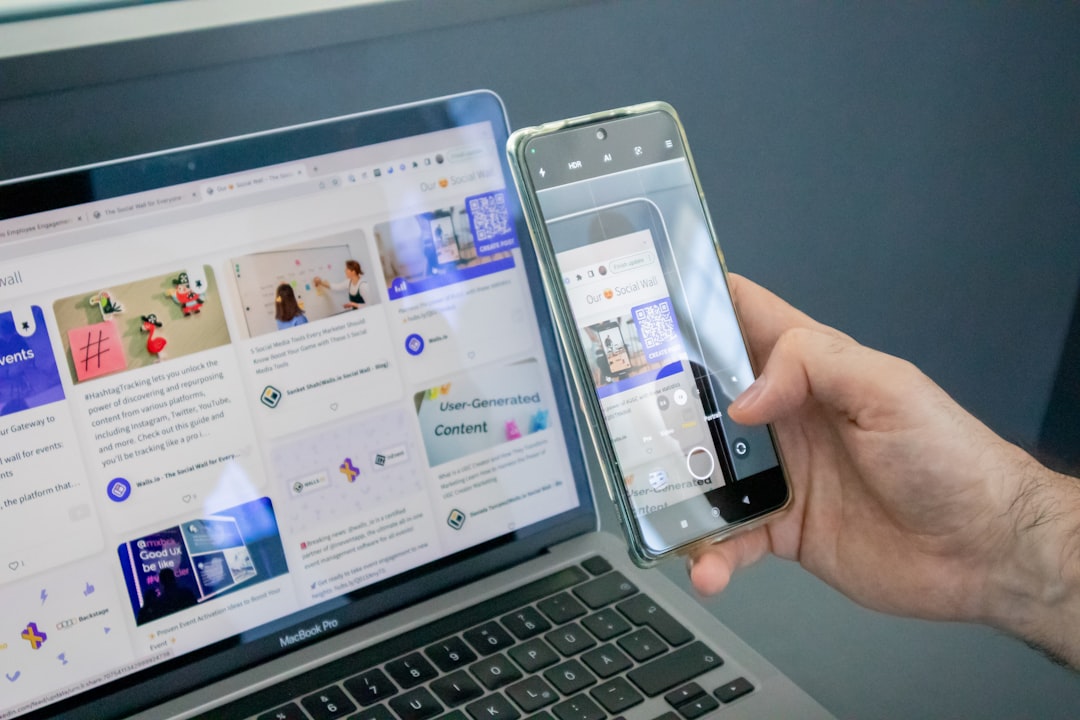

Engage prospects with a scan and streamline customer engagement with FREE QR code marketing tools by Sona – no strings attached!
Create a Free QR CodeFree consultation

No commitment

Engage prospects with a scan and streamline customer engagement with FREE QR code marketing tools by Sona – no strings attached!
Create a Free QR CodeFree consultation

No commitment
In today's digitally driven world, QR codes have evolved from occasional conveniences to strategic tools that bridge the gap between the dine-in experience and digital engagement. For Chinese food restaurants, these codes address persistent challenges by offering a seamless, intuitive method to drive customer interaction. By streamlining ordering, payment, and feedback processes, QR codes help ensure valuable guests do not remain anonymous or neglected, all without requiring app downloads or complicated setups.
QR code ordering has rapidly gained momentum, fueled by trends in contactless dining and changing consumer preferences since the pandemic. Yet, many restaurants still struggle with a lack of visibility into customer behavior, making it hard to identify which campaigns drive actual engagement or to follow up with departing prospects. QR code ordering modernizes these analog systems by enabling Chinese food restaurants to capture intent signals at every touchpoint, elevating operational efficiency and meeting rising expectations for speed, safety, and personalization.
This guide explores how QR code technology can transform customer engagement and streamline workflows in Chinese food restaurants. Discover actionable strategies that unlock scalable benefits for both owners and guests while directly addressing real-world obstacles such as missed opportunities, anonymous traffic, and disconnected experiences.

QR codes close a crucial gap between physical dining moments and digital actions, a gap that often leads to missed opportunities such as high-value visitors leaving without providing their details or feedback. When deployed thoughtfully, QR experiences can guide guests from curiosity to action in just a few seconds. The result is a measurable uptick in engagement, faster service, and a steady flow of insights you can use to improve menus, operations, and marketing.
Start by mapping your most common interactions: guests browsing a lunch menu, families checking a waitlist on a busy weekend, or takeout regulars seeking a faster reorder path. Replace analog choke points with scannable, mobile-friendly workflows that capture signals such as dish interests, add-ons, or dietary preferences. With the right tracking in place, every scan becomes a data point that informs what to promote next and how to invite a return visit.
Thoughtful execution turns QR codes into an always-on engagement engine. As you replace outdated processes with scannable interactions, you build a comprehensive picture of guest preferences that can be acted upon immediately, from limited-time specials to personalized offers that reward loyalty.

Traditional Chinese food restaurants have long relied on printed menus, table tents, wall specials, and in-person interactions, but these methods offer little visibility into who actually engages with your brand or whether campaigns drive meaningful action. As hospitality becomes more digitally connected, bridging offline experiences to online data is essential for sustained growth.
QR codes solve several persistent challenges. They instantly connect print and signage to digital destinations, which means a diner contemplating your steamed fish at a window display can jump straight into a waitlist or an order. They also remove the need for app downloads, logging in, or extra steps that often cause drop-off. The simplicity of scan, view, act improves both guest satisfaction and the accuracy of your campaign measurement.
Integrating QR technology across guest touchpoints helps Chinese food restaurants transform anonymous traffic into measurable engagement. Whether you operate a fast-casual noodle shop or a banquet-focused seafood palace, QR-enabled experiences improve both operational efficiency and marketing effectiveness while preserving the hospitality that keeps guests coming back.

Different QR formats suit different goals, and choosing wisely ensures your guest journey is both intuitive and measurable. For most restaurants, dynamic codes are the default because they enable ongoing edits and analytics without reprinting. Static codes are still useful for unchanging information, such as a permanent link to allergen information or a location map.
For dining rooms, takeout counters, and events, it helps to standardize a small set of formats that map to your core actions. This makes creation, deployment, and tracking more consistent across teams and locations. The following options cover most scenarios in Chinese food restaurants.
Dynamic QR codes power agile updates and trackable performance, which makes them ideal for menus, promotions, and experiments. Static codes fit permanent needs and can be printed at scale on packaging or signage. Using both together creates a dependable, flexible foundation for your QR strategy.

Growth begins where guests already interact with your brand. QR codes convert those interactions into measurable steps along the customer journey, which helps you reallocate budget to what works and quickly retire what does not. In Chinese food restaurants, the most effective placements blend utility with clear value for the diner.
Consider how each surface or channel can lead to a digital action. Consistent placements build habits. Regulars learn that your tabletop tent offers ordering, the receipt invites feedback, and the takeout bag includes a loyalty offer. Over time, scan rates rise because the value is predictable and immediate.
Strategic placement ensures your QR investment compounds over time. Each scan teaches you where to double down, which messages persuade, and which channels deserve lower priority.

QR codes shine when they streamline common tasks and capture useful data along the way. Start with a few high-impact use cases, then expand as teams and guests become comfortable with scanning.
Across dine-in and takeout experiences, the three use cases below deliver reliable results while preserving hospitality. They turn routine moments into opportunities to learn more about guests and reward them for engagement.
Each use case creates a digital touchpoint that elevates service while capturing data that was previously lost. Over time, these interactions form a continuous loop of insight and improvement: you refine the menu, target offers more precisely, and deliver service that feels tailored to each guest.
One frequent frustration is watching dining rooms fill without a reliable way to follow up. QR codes give every in-person moment a digital layer, which means each scan can be treated as a signal of intent that can later inform personalized outreach. With a bit of planning, you can segment audiences by what they scan, where they scan it, and when—see Sona’s Playbook intent-driven retargeting.
Start by mapping scans to lifecycle stages. Awareness scans often happen at the window or on neighborhood flyers. Consideration scans occur on menus and event materials. Conversion scans include online orders, payments, and loyalty signups. When each stage uses a distinct code, your CRM gains cleaner data and your follow-up becomes more relevant.
Over time, your QR infrastructure generates a living map of your customer base. You will see which journeys convert quickly, which require more nurturing, and which seasonal campaigns spur the most repeat visits. This turns intuition into evidence, and evidence into action.
Disconnected campaigns confuse guests and waste budget. QR codes help unify the experience by linking every offline surface to a trackable digital destination. When content, offer, and context align, guests feel guided rather than sold to, and your team gains clarity on what to scale. For methodology, read Sona’s blog offline attribution.
Think of QR codes as connectors that enrich each channel with real-time engagement. Whether a guest discovers you via a window display, a TikTok clip, or a festival booth, scanning should lead to a destination that fits their intent. A centralized platform such as Sona QR can then attribute activity back to the source and sync it with your CRM, creating a feedback loop that powers smarter decisions.
Sophisticated QR management tools can unify scan data across all placements and buyer stages. This gives you a complete view of each guest journey, from first scan to repeat order, and helps you deliver the right message at the right time.
An effective QR rollout starts with focus. Choose a single business outcome, such as faster lunch turnover or a larger loyalty database, then design a small set of codes that support that outcome across your most visible touchpoints. Keep the guest promise clear and the path to value short.
As your team gains confidence, add more use cases and refine creative, placement, and offers with testing. A platform like Sona QR makes this iterative process easier by centralizing code creation, routing, and analytics while integrating with your CRM.
Start with a measurable objective and a tight timeframe. For example, aim to increase weekday lunch mobile orders by 25 percent within six weeks. Map the guest journey from scan to completion and identify any friction that may prevent the desired action. Align internal stakeholders on the definition of success and how it will be measured.
Translate the goal into guest-facing value. If you want more digital orders, consider a clear benefit such as a complimentary hot tea for mobile orders or a speed promise that resonates with office workers on tight schedules.
Choose dynamic codes for anything tied to promotions, menus, or analytics, since they let you update destinations and track scans without reprinting. Use static codes for unchanging information such as your location page or allergen reference. Document the purpose of each code so teams know when and how to use it.
If you are unsure, default to dynamic. The small cost of dynamic management is offset by the flexibility to A/B test CTAs, switch offers, and attribute revenue later.
Keep contrast high, maintain adequate quiet zones around codes, and use a brief, benefit-first CTA. Include your logo in the center if it does not impede scannability. Pair each code with a short explanatory line such as Pay at your table in under 30 seconds to guide behavior.
Test across common devices in varied lighting. Print small proofs for table tents and large proofs for windows. Scan from realistic distances to ensure codes work for both seated guests and passersby on the sidewalk.
Start with two or three high-impact placements. For lunch engagement, use table tents, countertop signage, and the menu header. For takeout retention, print on bags, stickers, and receipts. For events, include on programs and chef station placards. Tag each placement in your QR platform so you can compare performance by location.
Educate staff to point out the codes and explain the benefit. A friendly reminder such as If you scan here, you can pay anytime or We have a special offer if you order with this code will lift scan rates without pressure.
Review scan volume, conversion rate, and time to complete the action. Identify bottlenecks such as slow-loading pages or confusing navigation. Run A/B tests on CTAs or change the offer to improve performance. Share quick wins with staff so they see the impact of their advocacy.
Roll improvements into the next print run or event, and update dynamic destinations as needed. Over time, your QR program will evolve from a set of experiments into a reliable growth lever.
For instance, a dim sum house might assign a unique dynamic QR code to each seasonal menu. When shumai scans surge on weekends but har gow lags, chefs can promote combinations or adjust prep to meet demand. Managers can use insights to plan staffing and rotate specials, while marketing teams retarget scanners with an invitation to the next tasting night.
Scan data is only the starting point. Many Chinese food restaurants struggle to connect in-restaurant engagement with business results, which makes it difficult to defend budget or prioritize campaigns. The solution is a clear measurement framework that links scan context, onsite behavior, and downstream outcomes such as orders, tips, reviews, and return visits.
A centralized platform simplifies this process. With Sona QR you can collect granular scan data, route visitors to optimized destinations, and sync those interactions into a CRM or analytics stack. With Sona.com you can extend measurement to multi-touch journeys and revenue attribution, creating a single source of truth for both marketing and operations.
The outcome is a measurement system that translates engagement into business value. Instead of guessing which placements or messages matter, you will know, and you can act on that knowledge quickly.
Success compounds when you standardize what works and keep experimenting at the edges. A few best practices will help you drive higher scan rates, improve attribution, and make each campaign easier to manage at scale.
Choose the tactics that fit your physical environment and guest behavior. A bustling downtown noodle shop may emphasize window decals and lunch offers, while a banquet-focused restaurant may focus on event programs, private room bookings, and seasonal tasting menus.
Start creating QR codes for free. A few minutes is enough to launch a pilot and start gathering insights that guide your next steps.
For Chinese food restaurants, QR codes are more than just a contactless ordering tool. They are a catalyst for end-to-end customer engagement and digital transformation. By tying every menu, table, and takeout bag to a clear digital action, you reduce friction for guests and unlock a steady stream of insights that guide staffing, menu strategy, and marketing. The payoff includes faster service, higher satisfaction, and more precise campaigns that spend budget where it works.
QR codes are redefining both traditional and modern Chinese dining by transforming every guest encounter into a potential source of engagement, insight, and growth. As you convert offline interactions into actionable digital touchpoints, you close gaps that once led to missed opportunities and unmeasured success. With a thoughtful plan, dynamic codes, and a centralized platform such as Sona QR and Sona.com, every scan becomes a step toward deeper relationships and sustained business growth.
QR codes have transformed Chinese food restaurants from traditional dining spots into interactive, data-driven engagement hubs. Whether it’s attracting new customers, enhancing the dining experience with instant menu access and promotions, or collecting valuable feedback, QR codes replace paper menus and guesswork with seamless, mobile-friendly interactions that boost loyalty and increase orders.
Imagine diners effortlessly scanning a code to explore specials, place orders, or join loyalty programs—all while you gain real-time insights into what drives repeat visits and upsells. With Sona QR, you can create dynamic, trackable QR codes in seconds, update campaigns instantly without reprinting, and link every scan directly to revenue growth. No missed opportunities, just smarter, more profitable restaurant marketing.
Start for free with Sona QR today and turn every QR scan into a loyal customer, a bigger order, or a glowing review.
Guests scan table-specific QR codes to access digital menus with dish photos and filters, place orders at their own pace, and pay contactlessly without app downloads or complicated setups.
QR codes streamline ordering and payment, reduce wait times, improve guest satisfaction, provide actionable data on customer preferences, and enable dynamic content updates without reprinting.
The article does not explicitly mention downsides, but implies that careful design, placement, and staff education are required to avoid guest confusion and ensure high scan rates.
The pandemic accelerated the trend toward contactless dining, boosting QR code ordering adoption to meet rising expectations for speed, safety, and personalization.
QR codes can be used for loyalty program enrollment, real-time feedback collection, waitlist management, event RSVPs, Wi-Fi access, app downloads, and linking to promotions or social media campaigns.
Use Sona QR's trackable codes to improve customer acquisition and engagement today.
Create Your FREE Trackable QR Code in SecondsJoin results-focused teams combining Sona Platform automation with advanced Google Ads strategies to scale lead generation

Connect your existing CRM

Free Account Enrichment

No setup fees
No commitment required

Free consultation

Get a custom Google Ads roadmap for your business






Launch campaigns that generate qualified leads in 30 days or less.
